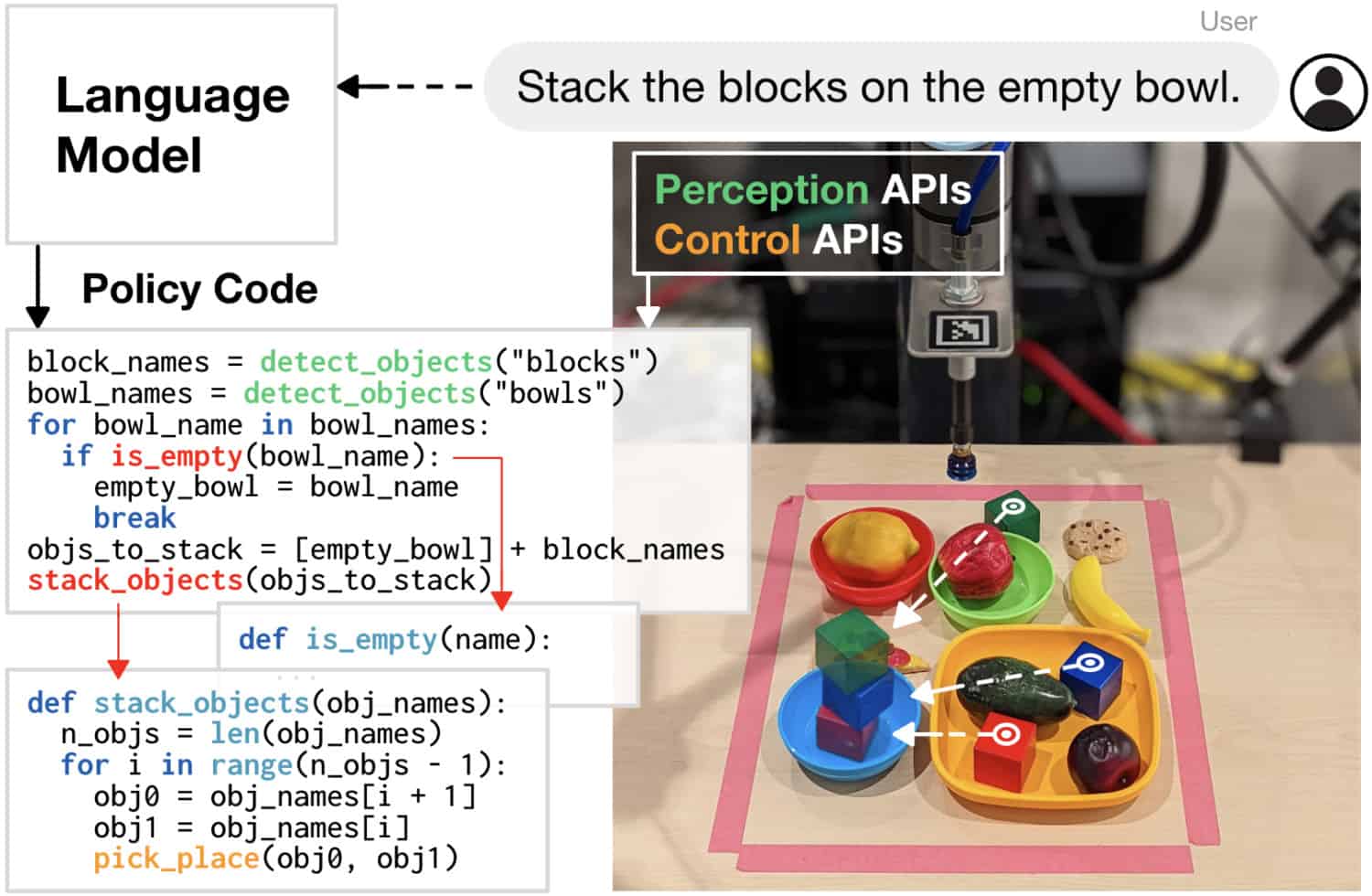A software prototype from Google allows robots to autonomously write code. Users write a sentence to describe a task, after which the robot automatically programs the workflow required.
It’s the dream of every low-code and no-code platform. Google’s software allows users to program workflows with a single sentence.
For instance, an application that sorts apples and pears can be generated by inserting the following line: ‘place the apples in the left bin and the pears in the right bin’.
The software uses natural language processing (NLP) to interpret the command and turn it into code. The result is a functional workflow.
Demonstration
The tech giant presented the software’s prototype at the Google AI event in New York. The system was given several basic commands during the demonstration, as shown in the video below. Place blocks in the correct scales, create a horizontal line, draw a pyramid under a circle, and so on.
The commands are simple. The system is in its early stages, but the concept works. Google made the code publicly available on GitHub. A robot needs to be tuned to get the code working. A camera is required as well, as moving a ‘block’ requires the robot to know where the block is located.
Google Code as Policies
Google named the project ‘Code as Policies’ (CaP). The prototype was developed by a team of Google researchers including Jacky Liang and Andy Zeng. The researchers shed light on the underlying technology in a blog post. The software uses multiple third-party APIs, libraries and natural language models to convert text commands to code.
The availability of such libraries and APIs is the project’s biggest limitation. There are very few natural language models available today that understand terms such as ‘bumpy’ or ‘C-shaped’. As a result, commands that depend on these terms are hardly supported, if at all.
The more complex the task, the lower the chance of success. Asking the software to build a ‘house with blocks’ requires a library or API with examples of houses, which are scarcely available at this time.

Long way to go
Google has demonstrated the project to invite feedback. Although the tech giant will continue to fund the research for the foreseeable future, we may be years away from the technology appearing in practice.
The limitations of natural language models are not the only challenge. Safety is a struggle for any autonomous system, from self-driving cars to Google’s software project. Researchers are experimenting with ways to guarantee that robots don’t perform unexpected actions over time, but the team has a long way to go.
Tip: ‘Stop weaponizing robots’, industry urges in public letter
